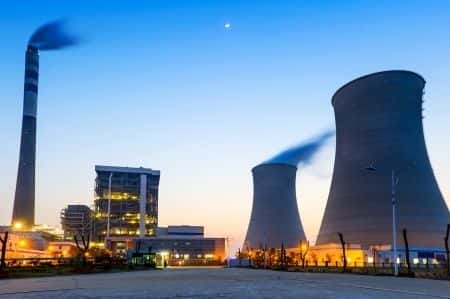Construction Workers Killed in Tower Collapse
Updated on
This case involves two hyperbolic concrete cooling towers that were being constructed at a power station. The cooling towers were to be 550 feet high and about 410 feet in diameter. The towers were designed to cool water from the power station before it was returned to a nearby river. The construction company’s architect used a four-tier scaffold to raise each concrete structure. The scaffold was secured to the tower’s inside and outside surfaces. Working platforms were suspended from the inside and outside jacking frames of the towers. Work on the towers was very dangerous and workers were paid double for their jobs. During construction of the second tower, the formwork system failed. A bucket of concrete was being delivered to one of the platforms and the tower began to collapse inward. The platforms, fresh concrete, and formwork all collapsed. Seven construction workers were killed after they were pulled inside the tower into a heap of concrete and jumbled debris.
Question(s) For Expert Witness
1. What could cause the collapse of scaffolding that was secured to a tower’s surfaces during a construction project?
Expert Witness Response
![]() The first part of the scaffolding that would need to be investigated in this case is the concrete in one of the lifts of the tower that collapsed. If the concrete in the section of the tower that collapsed did not have adequate strength to resist applied construction loads, this may have caused the collapse. If the concrete had not attained sufficient strength to support the jump forms used, any imposition of construction loads on the shell of the tower before the concrete had gained adequate strength to support these loads would probably have led to the tower collapsing. Because of this, the construction company in this case was supposed to establish some rules regarding the strength of the supporting concrete. Especially if the temperature was very low, the construction company should have tested the concrete before the framework of the tower was removed. The construction company should have performed field tests on the concrete to make sure that it had attained enough safety strength to support the construction loads before they removed the forms. The construction company in this case should have also tested the anchor point for the static line that was used for hoisting the concrete to make sure that there was no problem with the lifting system.
The first part of the scaffolding that would need to be investigated in this case is the concrete in one of the lifts of the tower that collapsed. If the concrete in the section of the tower that collapsed did not have adequate strength to resist applied construction loads, this may have caused the collapse. If the concrete had not attained sufficient strength to support the jump forms used, any imposition of construction loads on the shell of the tower before the concrete had gained adequate strength to support these loads would probably have led to the tower collapsing. Because of this, the construction company in this case was supposed to establish some rules regarding the strength of the supporting concrete. Especially if the temperature was very low, the construction company should have tested the concrete before the framework of the tower was removed. The construction company should have performed field tests on the concrete to make sure that it had attained enough safety strength to support the construction loads before they removed the forms. The construction company in this case should have also tested the anchor point for the static line that was used for hoisting the concrete to make sure that there was no problem with the lifting system.
Subscribe to our newsletter
Join our newsletter to stay up to date on legal news, insights and product updates from Expert Institute.
Sign up nowFind an expert witness near you
What State is your case in?
Subscribe to our newsletter
Join our newsletter to stay up to date on legal news, insights and product updates from Expert Institute.


